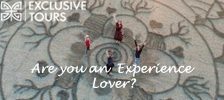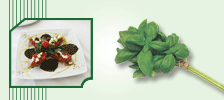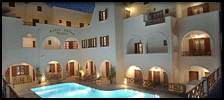
The prehistorical Museum of Santorini (Fira)
The Museum of Prehistorical Fira, entertains discoveries from the excavations in the area of Akrotiri, that was carried out under the aegis of “On Athens” of Archaeological Company, the precocious excavations in the River that was realised by members of German Archaeological Institute Athens, and rescued excavations in various other localities of island, that were carried out by the 21st Eforia of Antiquities for the Cyclades and Samos, as also and objects that were discovered accidentally or delivered the report it is structured in four units that are reported: in the history of research in the Thira, in the geology of Thira, in the history of island from the Later Neolythical until and the Later Cycladic season (precocious 17th century B.C.) and the prime period of city of Akrotiri (Later Cycladic the season, 17th century B.C.)
Specifically in the last sector are presented aspects, as the drawing and the architecture of city and her organisation as urban centre, the resulting bureaucratic system, the growth of monumental art of mural, the rich and different repertory of pottery, the elegant jewels, the reciprocal influences between the angiography and the mural, and the complex network of city and the island of contacts with the outside world. The exhibits include the fossils of installations that developed before the human inhabit in the Thira and the archaeological objects. Between the oldest pieces she is neolythical pottery, precocious Cycladic marble figurines, precocious Cycladic pottery, included the interesting pieces of transient phase from the later Second Cycladic Period in later Tuesday Cycladic Period (team Kastri), from the islets Christians and Cape (3300-2000 P.H.) - medium Cycladic pottery with a line of impressive jugs of birds, many from that decorated with many their from that are decorated with their swallows - from the Ftelios, the Megalochori and the Akrotiri (20th-18th century B.C.), and the premature handmade objects of Cycladic metals from the last two regions.
Remarkable between the many exhibits from the period when the city of Akrotiri was in the climax her (17th century B.C) is the lime mortar in him flies the furnitures, the domestic equipment, the ships of coper, the tools and the arms, the objects that strengthen the practice of metallurgy, sealing and seals. Impressive also are the marvellous totals of mural (mural of ladies and papyruses, mural of blue apes) and items from other (the "African apes", bird, patterns of flowers). Finally, they exist many and luxurious vessels of clay of included remarkable pots with the bull, vessels of Stone and clay that is imported by the different parts of Aegean and Eastern Mediterranean, and the golden figurine of ibeces, a recent remarkable discovery. The report tries it sketches out the course of C'ras in the prehistorical years, via selected discoveries from the thousands that are stored. A dynamic and creative way that established the city of the Cape as one from the more important centres in the Aegean at the duration the 18th and 17th century B.C.
Hours of Operation: Summertime 2009
Each day except Monday: 08:30 - 20:00
Useful Info
 Shopping
Shopping Architecture
Architecture Entertainment
Entertainment Food
Food The Volcano
The Volcano History
History Morals and customs
Morals and customs Beach
Beach Access
Access Transportation
Transportation Useful Info
Useful Info Local Products
Local Products


